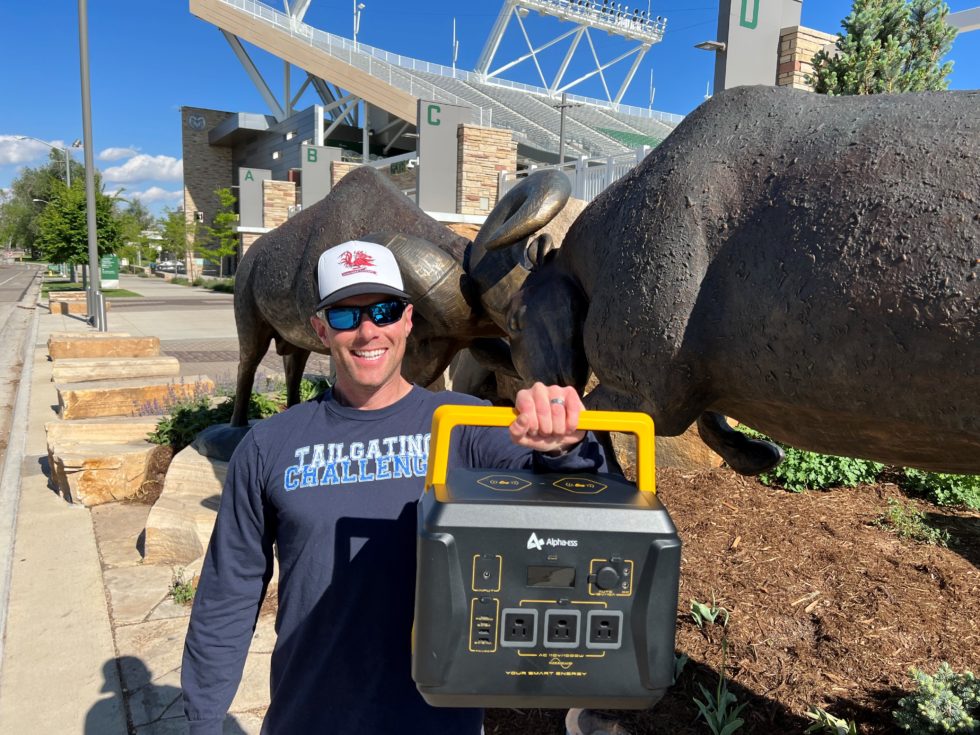AlphaESS AP1000 Power Station Review – Worth the Money?
written by Derrick James

Having a reliable energy source during an emergency is a crucial part of personal preparedness. Off-grid electrical power comes from either short or long-term sources. Long-term would be sources like domestic solar panels and wind turbines. Short-term would be things like generators and battery banks.
In this article I’m looking at a short-term backup energy solution: the AlphaESS Portable Power Station AP1000. AlphaESS, a newcomer in the portable power station market. Their main strategy to doing this – better pricing.
Portable power stations of this type don’t come cheap, so AlphaESS’s ability to shave a few hundred dollars off the purchase prices when compared to competitors might give them the edge they need. But how do their products stand up? Are they worth the money?
First, are power stations of this type even necessary?
Table of Contents
- Energy Needs in an Emergency
- Non-Emergency Uses
- AlphaESS AP1000 Product Specifications
- My Findings
- Summary
Energy Needs in an Emergency
We have a wood stove to heat our house in cold weather. The unfortunate thing is that because it’s actually a fireplace insert, we need a small amount of electrical power to run the fan that blows the hot air. A traditional wood stove would just sit in the room emanating heat. We need a small amount of electricity to heat the house.
Puerto Rico found the importance of grid-down communication after Hurricane Maria struck. Of course, even if you have a ham radio to communicate when the grid goes down, you still have to power that radio. Unless you want to rely on smoke signals and flags, you need power to have a communications system.

Lights out? Not here. Just the ability to power a simple light is big when the power goes out.
Some durable medical equipment also requires power.
Gasoline/propane portable generators certainly have their place. I own a big Briggs and Stratton generator that I can wheel out to power the entire house if the power goes out. It offers significantly more amp than any battery-sourced portable power station. They have drawbacks, however. Gas generators are loud and they pollute. They poison thousands every year.
Running gas generators outside the home is the obvious safety solution, but what if you want to silently power a light or charge electronic devices? What if you want to a power source inside your home? What if you want to use something inside a tent?
There are plenty of times that you want power but not the noise and pollution of a traditional generator.
Non-Emergency Uses
Portable power stations that run off of a large, charged battery are perfect for many non-emergency uses. Because prepping costs can add up, I like products that have dual uses. I can justify buying a product that I’ll only use in a collapse, but it’s easier to justify a product that will help in a collapse but that can also be used today.

Portable power stations can also serve work purposes. Here I charged the power station from my truck and powered my laptop from the power station.
Portable power stations like AlphaESS can get emergency and recreational use. I can take one of these camping and not have to worry about fiddling with propane or white gas lanterns. I can just plug in a conventional lamp. I don’t have to run the vehicle to charge a cellphone, I can just set it on top of the AP1000 for wireless charging. We can run the radio off it. Heck, we can even power a toaster!
AlphaESS AP1000 Product Specifications

The AlphaESS has wireless cellphone chargers on the top of the unit.
- Large capacity with 1036Wh
- 2000W surge power
- 4 charging inputs (AC, solar, USB-C, and car charger)
- 3 AC outputs
- 4 USB outputs
- 2 wireless charging pads on top of the unit
- 2 DC outputs
- 1 car port: 12V/10A
- 2 large LED light panels with 3 brightness settings and SOS mode
My Findings
For some real world, real world data, I ran a few tests on the AP1000.
That picture I took of the running the lamp? I ran that 30W CFL bulb from 9pm to 6:30am, 9.5 hours. It used 22% of the battery’s power. That means it could power the light for about 43 hours on a single charge. That looks consistent with the company’s claim of 80 hours on a 5W bulb.
In this test I worked the day using the AlphaESS to power my laptop and a second monitor.

Working all day with power from the AP1000.
I started the laptop and monitor at 7:30 AM and stopped at 7:00 PM. There were about 4 hours of down time in that span, so it was was a solid 7.5 hours of use. It started at 100% charge and by the time I was done it was at 62%. Not bad! I could easily get two days of full computer use with a second monitor off of one charge.
I plan to take this unit camping this summer. I can set it on the picnic table on Friday and let kids charge cellphone, run a lamp, run a radio, and pack it up on Sunday, all without having to recharge. If I needed it longer, I could just charge it in the truck.
- One thing I will say is that the light on the AlphaESS is far more robust. It has 3 different levels of brightness plus a flashing “SOS” setting that could be a lifesaver in certain situations.

Here is the AP1000 built-in light on its highest setting.
Summary
Portable power stations that build up a charge in a large battery bank are unique pieces of survival equipment that can also be used in the here and now, regardless of whether a catastrophe strikes. If a disaster did strike, however, their value would be immense. You can run lights off of them, communication equipment, medical equipment, etc. Best of all, the batteries can be recharged in a wall outlet, in the car, with optional solar panels, etc.
The AlphaESS AP1000 appears to be a quality product at a reasonable price. I would recommend it for people who want a portable power station and are willing to compromise on name brand in order to save money on the purchase price.
Article Source:
AlphaESS AP1000 Power Station – Worth the Money?




